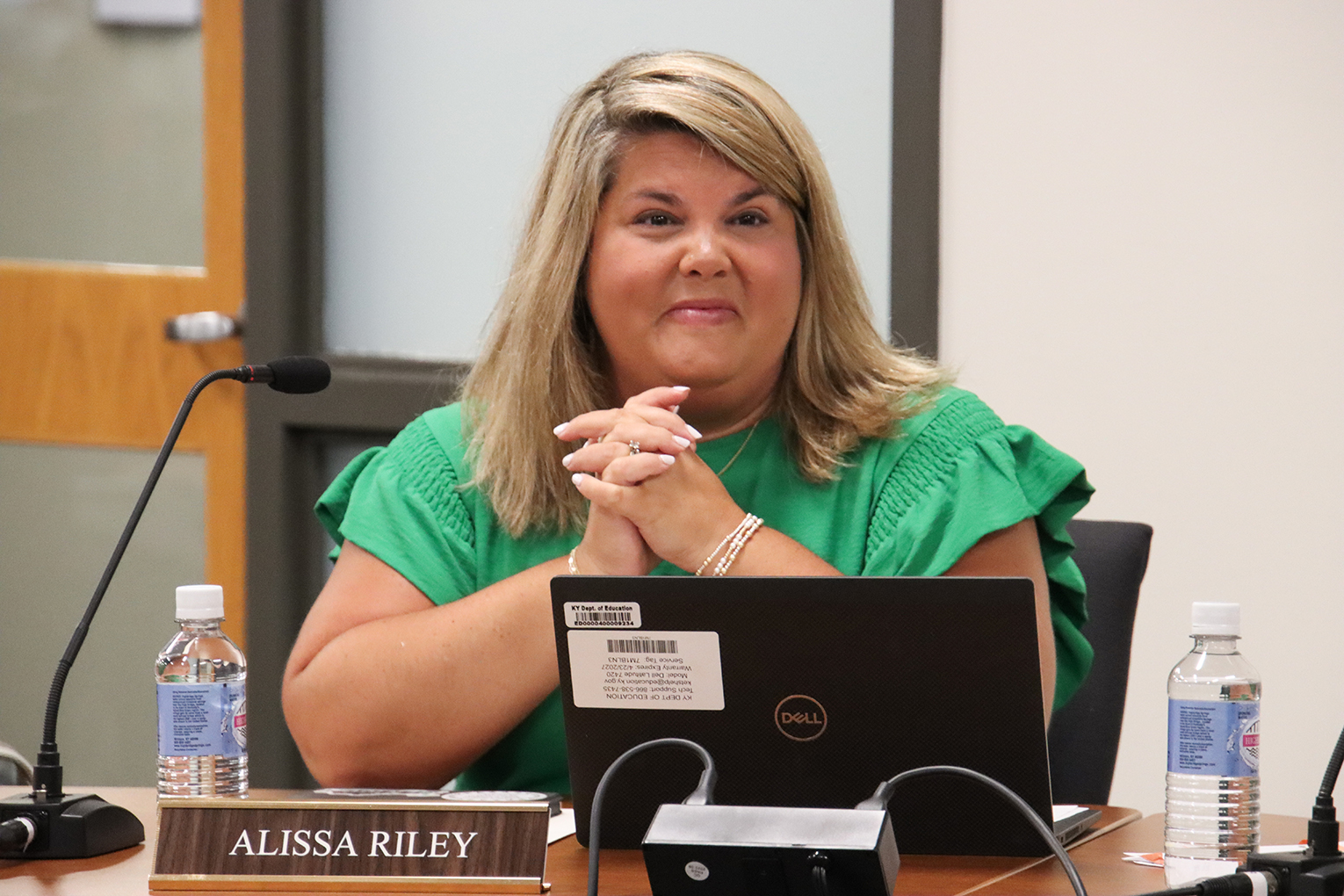By Tanya Jury
Tanya.jury@hardin.kyschool.us
Although it used to be the norm for teachers to close their doors, lecture for 45 minutes while students sat in rows, listened, and took notes, times have changed. Over the past several years, student engagement has started to become quite a popular topic in the realm of education. So much so, that if you were to Google “student engagement,” there would be about 23 million hits and countless research articles. So, why has such interest arisen regarding student engagement?
Research proves that student engagement can increase student achievement while decreasing negative behaviors. If students enjoy what they are learning, they are more apt to process and retain the information, leading to true life-long learning rather than just memorization for an assessment. It was once said that we remember 10 percent of what we read, 20 percent of what we hear, 30 percent of what we see, 50 percent of what we see and hear, 70 percent of what we discuss with others, 90 percent of what we personally experience and 95 percent of what we teach others. Schools that allow students consistent opportunities to truly experience their learning and then allow them to teach others what they have learned will see great gains in their student academic achievement.
When students are actively engaged, they seek a deeper understanding of the topic. Engagement is not just about doing what’s fun, but really getting into deeper intellectual thought, questions, discussions, and letting the students truly experience what real learning is. At that point, students can achieve more than anyone ever thought possible. I know in my own classroom, students continue to talk about opportunities where I allowed them to work independently on a task, discuss it with their group, and then create a product from their learning to share with the class. This engagement strategy encourages students to think on their own, but it also allows them the opportunity to learn from and teach their peers. It was always a favorite among my students and it was evident from their quality of work and discussions during these sessions, true learning was taking place. As an educator, I couldn’t be more proud than to watch my students take their learning into their own hands and thrive.
Not only do we see an increase in academic achievement with consistent, active student engagement, but students who are actively engaged are more likely to exhibit positive behaviors. When students have a passion and an interest for what they are learning, they are going to be more focused and better behaved. It is when students are bored, do not understand the content or are disengaged that behavior problems often arise. So, this is really a win-win situation for everyone. Student achievement goes up, positive behaviors go up, and student confidence, interest and learning go up.
We have all sat in meetings and professional development sessions hoping to learn something useful for our classroom presented in an engaging manner. Our students are no different. Today, more than ever, students have so much demanding their attention, especially as we are well within the digital age. Therefore, if it is not something that enables them to experience learning, they will easily become bored. They may be compliant and complete the work, without ever truly learning.
On the flip side, teachers, too, have so much on their plates that it is often difficult to plan lessons day after day that will be engaging. However, as another example of just how important student engagement is, it is now a component on the Professional Growth and Effectiveness System (PGES) and the student survey. Kentucky realizes the impact engagement has on student achievement and wants it to be available to all students.
Student engagement is gaining popularity, but it will soon become the norm. When that happens, we can almost guarantee significant academic achievement gains and a true understanding of learning for our students. As we begin to focus more on engagement, Kentucky students will gain an advantage that will help them in college, the workforce and in life.
Last year I delivered a professional development in which I offered teachers 10 quick engagement strategies that could be used in any content area and with any topic (Please see box). They do not take a lot of planning, but can make a huge difference in a child’s engagement. These strategies are a compilation of ideas from various resources used to spark interest and help students to experience true learning. This is far from an exhaustive list, but includes a few ideas to add to your toolbox. Almost all of these have variations! If you would like further information on how to implement these strategies in your classroom, you can reach me at tanya.jury@hardin.kyschools.us.
Tanya Jury, a Hope Street Fellow, is an Assistant Principal at Bluegrass Middle School in Elizabethtown, KY.




Leave A Comment